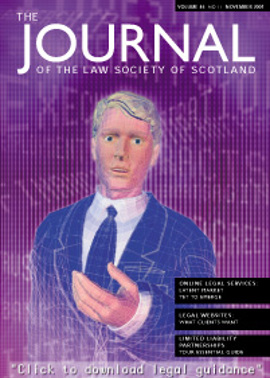Reconciling trade marks with domain names
Domain names often incorporate names which are registered marks. Some domain name users suppose that the availability of a domain name for purchase signifies that the domain name might be used without fear of challenge. On the contrary, trade mark law may expose the unwary registrant to infringement proceedings.
The Legislation
A registered trade mark will be infringed if a person uses in the course of trade:
- an identical mark in relation to identical goods/services (Section 10(1));
- an identical mark in respect of similar goods/services or a similar mark in respect of identical or similar goods/services where there exists a likelihood of confusion on the part of the public which includes the likelihood of an association with a trade mark (Section 10(2));
- a sign which is identical with or similar to the trade mark and is used in relation to goods/services which are not similar where the trade mark has a reputation in the United Kingdom and use of the sign, being without due cause, takes unfair advantage of, or is detrimental to, the distinctive character or the repute of the trade mark (Section 10(3)).
Some Issues for Domain Names
While the trade mark legislation seems straightforward, its application to domain name disputes raises a number of issues:
- What is “use in the course of trade” ?
- Is mere registration of a domain name “use in the course of trade” ?
- In order to establish infringement under Section 10(3) is it necessary to establish confusion?
- Do different considerations apply to so-called “generic” domain names?
- When might use of a sign incorporating the mark be “without due cause”?
Happily many of these issues have been addressed in case law, particularly in the judgments at first instance and on appeal in One in a Million.
In One in a Million, the defendants had registered well-known company names as domain names. The plaintiffs maintained that the defendants’ conduct involved threats of acts falling within s10(3).
The lower Court1 rejected the argument that use ‘in the course of trade’ means use as a trade mark. “Use by way of business” was what was meant. A different approach was adopted by the appellate Court2. The Court declined to express a settled view on whether the use had to be as a trade mark. However, it took the view that in the event since domain names were indicative of the origin of goods or services the use of a domain name entailed use as a trade mark. Implicit in the judgments is the view that registration alone may constitute “use in the course of trade”.
The defendants argued that confusion was necessary for infringement under Section 10(3). Both Courts doubted whether this argument was correct and took the view that even if it was, registration of the domain name created a likelihood of confusion.
Generic domain names are those incorporating a common descriptive term. So, domain names incorporating “Madonna” or “easy” along with “jet” are said to be generic since these words have ordinary meanings not associated with the popstar Madonna, or easyJet airline. UK trade mark law makes no special provision in this regard, but the Court in One in a Million implicitly acknowledged that the distinction is relevant. As regards the Virgin mark the Court recognised that “it is somewhat less absurd for the Defendants to suggest …. an innocent use”. It may prove more difficult for the holders of generic marks to show use without due cause. It may also be more difficult to show that use takes unfair advantage of the mark: the mark holder may struggle to establish a monopoly in the name.
The question of whether use is “without due cause” has been addressed in ICANN3 decisions. Relevant factors include whether:
- the domain name registrant had a prior connection with the name
- the name is descriptive of his goods and services
- he genuinely intends to trade
A Word of Caution
The issue of groundless threats of trade mark infringement proceedings is an actionable wrong4. Always ensure that the evidence supplied by your client adequately supports the issue of such threats and warn your client as to the consequences if the threat proves ill-founded.
Lisa and Pauline head up Brechin Tindal Oatts’ Intellectual Property Consultancy. For more information contact lf@bto.co.uk or visit www.bto.co.uk
- One in a Million 1998 FSR 265
- One in a Million 1999 FSR 1
- Internet Authority for Assigned Names and Numbers. ICANN administers domain name dispute resolution procedures. We will look at the ICANN decisions in the next article in the series.
- Section 21 Trade Marks Act 1994
In this issue
- President’s report
- Appreciation: James Sutherland
- Appreciation: Sheriff Archibald Angus Bell QC
- LLPs fulfil unmet need
- Mixed profits in country firms
- Legal websites: a Scots quair
- Nice website; shame no-one’s ever going to see it
- Latent market still untapped
- Reconciling trade marks with domain names
- Information overload
- Cultivating your competitive edge
- Ownership of files and ancillary matters
- Professional indemnity insurance – not total
- In-house lawyers challenge on legal privilege
- Book reviews






